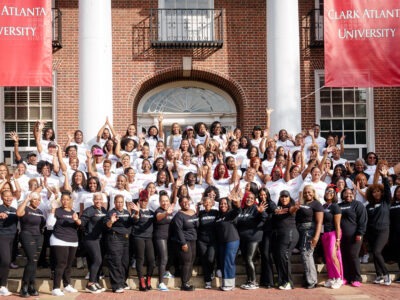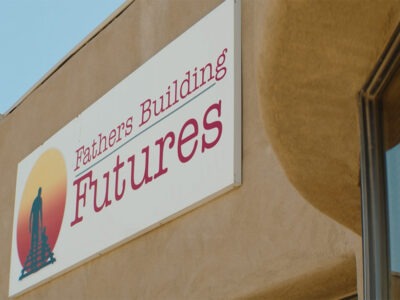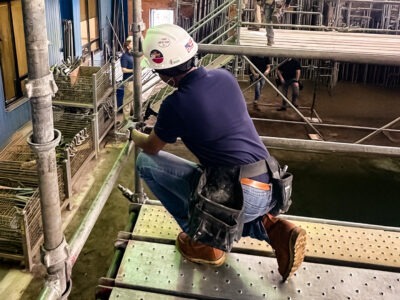In August 2024, Ronald Silver II, a 36-year-old father of five children and a sanitation worker in Baltimore, died while working his shift in a garbage truck. The city examiner determined the cause of death was hyperthermia caused by extreme heat. This incident highlights the pressing need for heat standards, even in areas not typically associated with extreme temperatures.
As temperatures continue to rise due to climate change, the need for comprehensive heat standards to protect workers has become increasingly urgent, according to advocates. Workers across various industries, from construction and agriculture to warehouses and delivery services, face dangerous conditions that put their health and lives at risk.
Last August, the Occupational Safety and Health Administration (OSHA) published proposed rulemaking for heat standards. The proposed standard would apply to all employers conducting outdoor and indoor work in all general industry, construction, maritime and agriculture sectors where OSHA has jurisdiction. After a public comment period, OSHA has introduced a proposed rule and will hold a virtual public hearing beginning on June 16, 2025.
Workers and their allies are also advocating for similar protections at the local and state levels. As we prepare to enter another deadly “heat season” without protections in place for many people, the work is more urgent than ever.
Standing together for safety
W.K. Kellogg Foundation grantees National Council for Occupational Health and Safety (COSH), Workers Defense Project and United for Respect Education Fund are at the forefront of pushing for these essential protections and calling for the urgent adoption of a federal heat standard. These organizations represent workers’ interests and push for safer working conditions across the United States because when parents have safe jobs with a living wage, children and families thrive.
Jessica Martinez, executive director of National COSH, emphasizes the severity of the situation: “Every year, we tragically lose around 2,000 workers to preventable fatalities and witness over 170,000 injuries and illnesses linked to extreme heat. These staggering figures, while alarming, are likely just the tip of the iceberg.”
At National COSH, the commitment to ensuring safe and equitable working conditions is paramount, particularly for those in hazardous, low-wage jobs. Through the “Fired Up!” campaign, they are mobilizing workers nationwide to demand vital heat protections and equip them with the knowledge necessary to navigate the dangers posed by extreme heat.
Workers Defense Project, a member-led organization in Texas, focuses on worker and immigrant justice by combining legal work with organizing to address the root causes of workplace issues and improve working conditions. Lizeth Chacón, executive director, highlights the urgency of the issue: “We’re looking at preventable deaths. People could be going safely to their home, to their families, to their community at the end of the day. They’re not, because we’re not taking enough action to save them.”
United for Respect, which stands for the concerns of retail and warehouse workers, has been actively involved in addressing heat-related issues in warehouses. Bianca Agustin, co-executive director, said, “Folks pass out, folks get rolled out in stretchers. …They literally walk out and send them to the onsite clinic, and then they go back to work, basically.”
“It really comes down to treating workers like humans.”
The proposed OSHA heat standard would cover both indoor and outdoor workers, providing crucial protections that are currently lacking in most states. These protections include:
- Access to regularly available cool drinking water
- Regular rest breaks in shaded or air-conditioned areas
- Training on heat illness prevention and symptoms
- Acclimatization periods for new workers or those returning after extended absences
- Emergency response procedures for heat-related illnesses
- Proper ventilation and cooling systems in indoor workplaces
- Flexible work schedules to avoid the hottest hours of the day
- Regular health check-ins during extreme heat events
Many of these standards – things like access to cool water, regular breaks and training on the signs of heat illness – are quite simple, common-sense protections, according to advocates. “It really comes down to treating workers like humans,” said Martinez.
Implementing these standards would significantly impact workers’ lives and, by extension, their families and communities, advocates say. When workers are protected from extreme heat, they are less likely to suffer from heat-related illnesses or injuries, ensuring they can return home safely to their loved ones. This stability helps families to thrive, as parents can maintain steady employment without the fear of heat-related health issues or job loss due to heat-induced absences.
Documented health effects show that prolonged exposure to high temperatures can lead to heat exhaustion, heat stroke, dehydration and cardiovascular stress. In some cases, it can cause permanent damage to vital organs such as the liver and brain. These health impacts not only affect the workers themselves but also place significant emotional and financial burdens on their families, and ultimately, their communities.
A growing urgency, a need for equity
As global temperatures rise, extreme heat events are becoming more frequent and severe. Chacón notes, “Climate change has made it more deadly for our folks on the job and in their general lives.” This increasing threat makes it crucial to implement comprehensive heat protections for workers across all industries.
The impact of heat-related hazards extends beyond the immediate health risks to workers. It disproportionately affects low-wage, high-hazard workers, who are often from Black and Brown communities. Martinez emphasizes, “We see the biggest number of fatalities among Latinx workers, and this could be for many reasons. It could be from heat exposure, from falls, just really doing some of the dirtiest, most dangerous jobs.”
A report from Jobs to Move America highlights how improving job quality in Southern manufacturing can strengthen entire communities — a reminder that better working conditions, including protections from extreme heat, have ripple effects far beyond the workplace.
Recognizing this alarming trend, National COSH is at the forefront of language justice efforts, ensuring that workers receive training and information in a language they understand. Martinez highlights, “It’s essential that workers receive information and training on heat-related hazards in their native languages. This guarantees that all employees can comprehend the risks and advocate for necessary safety measures, regardless of their linguistic background.”
Through these initiatives, National COSH is not only advocating for better protections against heat-related dangers but also empowering workers to engage actively in their safety and rights. By promoting language accessibility, they strive to create a more inclusive and equitable environment for all workers, addressing both the immediate dangers of extreme heat and the systemic inequalities that exacerbate these risks.
Responses from the business community and localities
Whether or not the current OSHA standards are enacted, some in the business community are advocating that employers take the proposed rules as an opportunity to consider their safety practices.
“As incidents surrounding heat related injuries and illnesses rise in workplaces across the country, employers can use this proposed rule to assess and reflect on their own heat safety protocol,” says a blog post by Lindabury Attorneys at Law, a labor and employment law firm.
Workers are playing a leading role holding companies responsible for heat safety. Earlier this year, National COSH affiliate WeCount! secured a groundbreaking pledge for heat protections from the developer of a $3 billion redevelopment project in Miami.
While the federal OSHA heat standard is still pending, some states and localities have taken the initiative to implement their own heat protections. Local COSH affiliates, such as SoCalCOSH and Worksafe in California, along with the Northwest Workers’ Justice Project in Oregon, have organized with their local partners to help these states adopt comprehensive indoor and outdoor heat standards. Building on these examples, National COSH is leading community and labor organizations in fighting for a similar standard in Arizona, where last year workers in Phoenix endured 70 days at or above 110 degrees.
In Texas, Workers Defense launched a certification program called Better Builder®. The program has impacted more than 100 construction sites, totaling more than $10 billion in construction projects affecting more than 50,000 workers. Because of the program, monitors have been able to correct 741 safety violations and recover more than $140,000 in back wages for workers.
The Role of Philanthropy
It is important for philanthropic organizations to play a role in helping create jobs where families can thrive. Worker safety is central in the work of climate resilience.
Philanthropy can support organizations that advocate for improved heat standards in workplaces, especially as rising global temperatures increasingly threaten worker safety. Through strategic funding, philanthropy can strengthen nonprofits and advocacy groups to conduct vital research, raise awareness and advocate for stronger regulations that protect workers from extreme heat exposure.
These changes will only come about through the collective efforts of philanthropy, government, workers’ organizations and businesses.







Comments